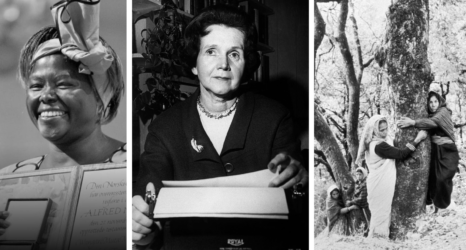“‘Justice, justice thou shalt pursue’ … was her mantra. It was a perfect encapsulation of what drove her. The pursuit of justice and the work to make ours a more just society.“
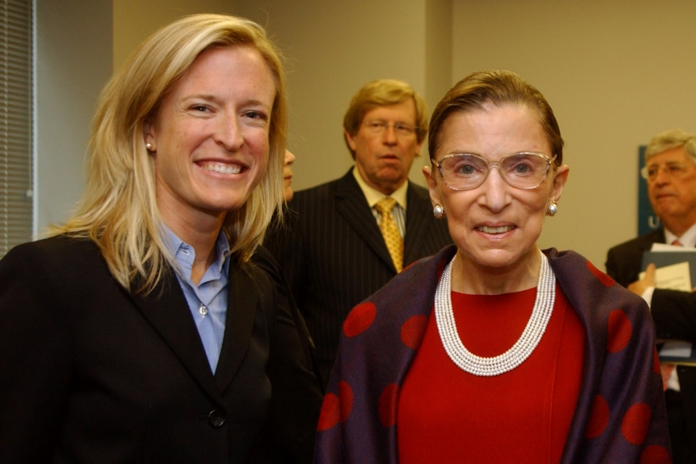
Just three weeks before she died, Justice Ruth Bader Ginsburg and her former law clerk, Berkeley Law Professor Amanda L. Tyler, finished the final manuscript for Justice, Justice Thou Shalt Pursue: A Life’s Work Fighting for a More Perfect Union. For the book, Ginsburg selected some of her favorite writings, some previously unpublished, including her first brief as a young attorney; transcripts of her favorite oral arguments before the Supreme Court; opinions she wrote later as a Supreme Court justice; and speeches reflecting on her life and work. The book has her famous dissent in the voting rights case of Shelby v. Holder that garnered her the nickname, “the Notorious RBG.”
Ms.‘s Carrie Baker interviewed Professor Tyler about the book, her decades-long relationship with the justice, and Ginsburg’s final thoughts on her legacy and hopes for the future of women’s rights.
Carrie Baker: What was it like to work for Justice Ginsburg?
Amanda Tyler: It was absolutely awesome. I was a law student when she hired me. I had been studying her incredible path-making work as an advocate, and I had read her opinions. This is someone who is the quintessential role model of all that a woman could be in the law, all that a woman could achieve. To have the opportunity to work for her was extraordinary.
But then, to actually live through the experience of having her take you under her wing, teach you, mentor you, develop a relationship with you, it was awesome. She really invested time and attention to mentoring at a really deep level, and she also made it fun. She took us to the opera. She took us to a private tour she set up at the National Gallery. She took us to a Gilbert and Sullivan performance. They had us to their home for dinner. She threw birthday parties for her staff and clerks. Marty baked the cakes.
It was all of those things wrapped up together that made it such a special experience, and then it’s all the experiences afterward, as well, all the things that she did for me and all of her other clerks to promote our careers, to counsel us on the direction of our careers and in my case the direction of my life. She was a huge figure in my life, and so to get to work with her on this book, her final project, was an honor. I can’t even put into words how fortunate I feel to have had this experience.
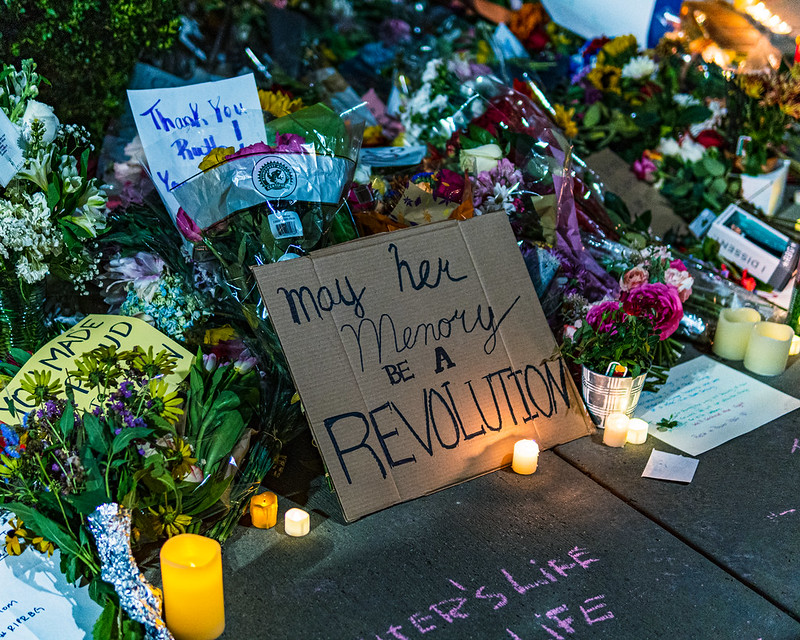
Baker: What did you learn from Justice Ginsburg?
Tyler: So many things. By the way she lived her life. She set an example of excellence, dedication. She was profoundly dedicated to being a public servant. It would be hard to overstate that. Throughout her battles with cancer, she continued to move forward and serve and work hard. Her brilliance, her high standards for herself and for others brought out the best in her clerks, without question. Working for her was like playing on a team with a great athlete. It would be like playing on the Women’s National Team with Megan Rapinoe.
She didn’t just teach us about the law. She taught us how the Constitution can be a force for good. She taught us how the Constitution has evolved to become more inclusive and how it could continue to do that work. She taught us to appreciate very acutely how the law affects the lived experiences of real people and how important it is to factor that in when thinking about fashioning a legal rule at a high level, as they do at the Court.
She also taught us a large amount about living a good life, and part of that entailed her marriage with her partner Marty. Watching the two of them was such a joy because theirs truly was a grand love affair, a love affair for the ages. They navigated both having hugely successful careers, but they supported and promoted each other. He was a key figure in promoting her candidacy to the Supreme Court.
She taught us how to live a balanced life. To work hard, to try to be your best at your career, but also never forget family comes first.
“She taught us how the Constitution can be a force for good. She taught us how the Constitution has evolved to become more inclusive and how it could continue to do that work.”
Baker: It’s amazing she was able to do all that she did at the time that she did it. She was able to have kids, develop this amazing career, have this strong marriage that persisted for over five decades, and help her husband survive cancer, then survive cancer herself.
Tyler: I think she was a superhero. She was superhuman in some respects. I am in awe of what she accomplished because I know how hard it has been for someone of my generation to chart a successful career in the law and have a family. I can’t imagine trying to do it without paid parental leave, without an infrastructure for child care, without so many other things, and with confronting blatant discrimination.
I think that what enabled her to accomplish what she did was, one, this ferocious determination to contribute. What drove her was she knew she was talented, and she knew she had something to give back, and nothing was going to stop her from doing that.
In addition, Marty. She had a husband who, unlike many men of his generation, understood and appreciated that she had the talent to make a major contribution, and he did everything he could to support her and to share in the parenting. She talked a lot about this. That it was really important to him to share in the parenting, and eventually, to take over the kitchen, because he was a far better cook than she was. I think it’s those two things. That she married an exceptional man. She had this drive, and nothing was going to stop her, and it was never about the glory. It was always about giving back and using her talents to make ours a more just society, which she did time and again.
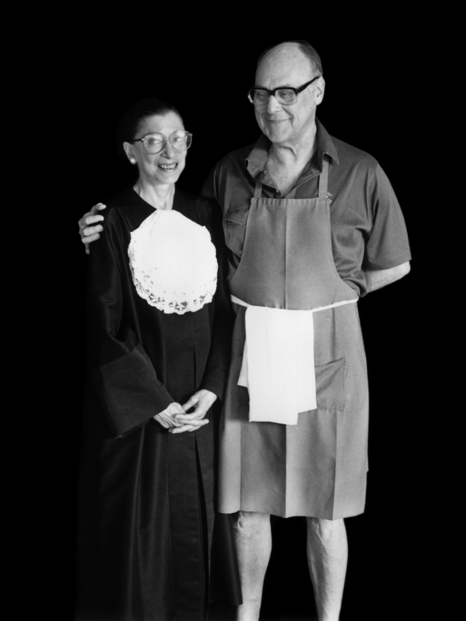
Baker: Did she have a good sense of humor?
Tyler: Yes. I think people failed to appreciate that. When you’re around them, Marty was the gregarious, super outgoing one, but she had her moments, and if you watch when she’s interviewed, you see that she had impeccable timing and a very subtle, but very powerful sense of humor. She could really bring the house down when she wanted to.
She loved his humor. I tell this story in a book about him taping a sign to her back at a law clerk reunion. It said “Her Highness.” When she discovered it, she laughed. She thought this was hysterical. That was a big part of their partnership. They made each other laugh, and it was fun to watch.
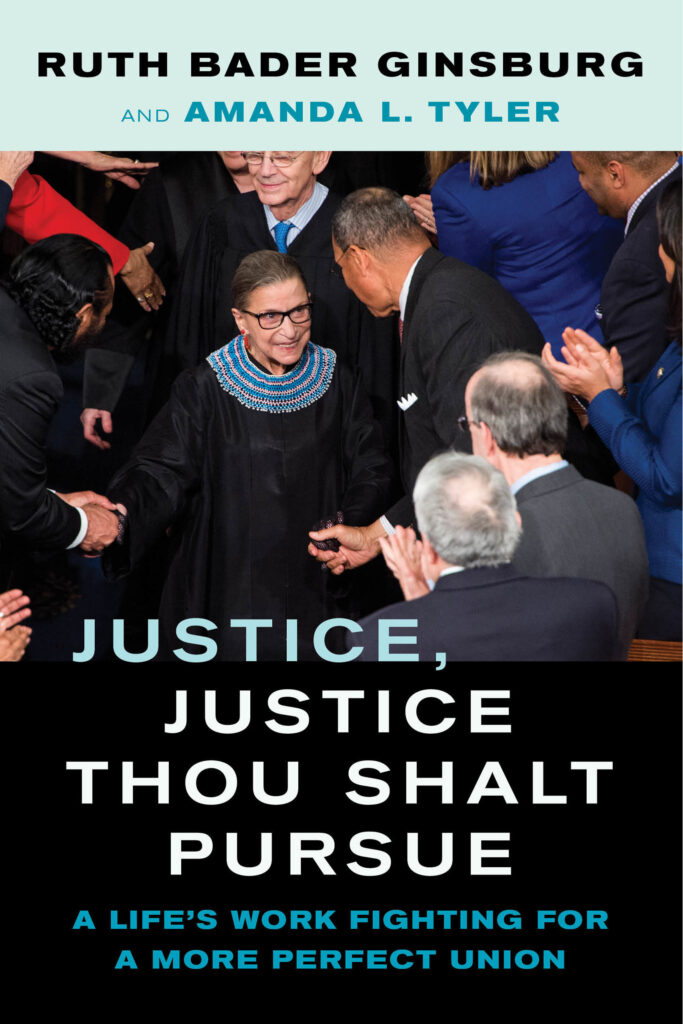
Baker: Why did you and Justice Ginsburg write this book?
Tyler: Justice Ginsburg had had a long-time friendship with Herma Hill Kay. The two of them, together with a third co-author Kenneth Davidson, had written the very first casebook on sex discrimination and the law, and in so doing, they had effectively founded the field in the early 1970s. Herma and the justice remained friends for 50 years.
Herma, at the end of her career, had been writing a book chronicling the stories of the first women law professors in this country, and several publishers had turned it down. The justice had written the preface for this book in 2015, and she’d written it about Herma, because Herma had not included herself in the book. Herma was, herself, a trailblazer, the second woman on the Berkeley Law faculty, the first woman dean of our faculty, and an incredibly accomplished, influential scholar and teacher and dean.
The justice wanted so badly for this book to be published, in part, because of loyalty to Herma, but also because these are the women who paved the way for Herma and the justice, and it was so important to her to see those stories preserved so that the next generations would know them.
And she got the idea that if we offered them a book built around our conversation at Berkeley Law School in October of 2019, conditional on that book being released alongside, they might go for the two-fer, and to our delight, they did. That’s a really important story for the origins of the book, because it shows how loyal she was as a friend and also how it wasn’t about her. It was about, in this particular case, preserving the stories of the women who came before.
[UC Press will publish Paving the Way: The First American Women Law Professors by Herma Hill Kay in April.]
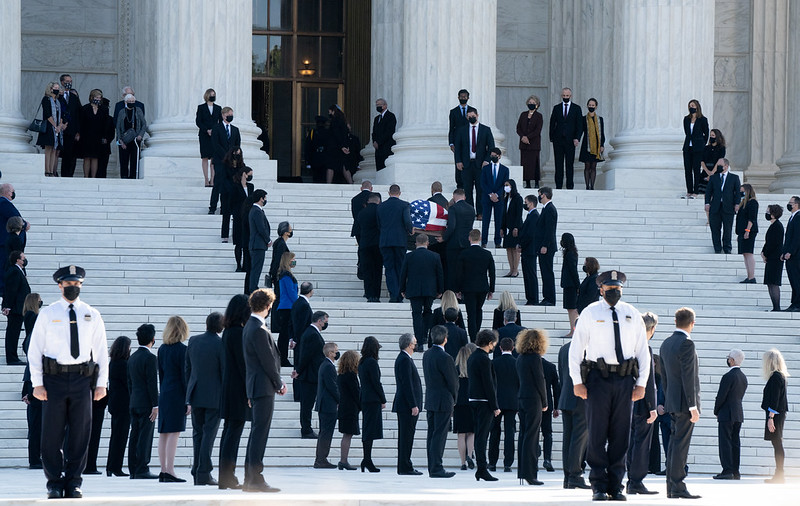
Baker: What does this book add to what’s already out there about RBG?
Tyler: It includes her telling her life story in her own words through a conversation. She talks in there about many things about which she hasn’t talked before, including the lessons of all the battles with cancer that Marty first had and then she had in her life. She’s handpicked a collection of things that, to her mind, if someone read nothing else about her, she would want them to read, and so, the very first brief that she filed, which has never been published before, that she wrote with Marty, that laid out the strategy of how they were going to dismantle gender discrimination.
She’s included the transcripts of her two very favorite oral arguments before the Supreme Court, favorite for different reasons. Frontiero was the first argument, and Wiesenfeld was one of her very favorite cases because it was a case that showed how ending gender discrimination freed up everyone, whatever their gender, to chart their own course and destiny. The opinions we included from her time as a justice are the ones that I think paint a picture for the reader of how great a writer she was, how she thought about the Constitution and how important it was to her to celebrate how ours is a Constitution that has grown ever more inclusive and has brought, under its protections, groups that were once excluded.
She really understood how important it was to try to understand how the rules, the laws and the issues that were in front of the court were going to trickle down and affect the lived experiences of real people. The Ledbetter and Shelby County opinions really show that.
And then she’s chosen her very final speeches given in the last years of her life. She talks about her family. She talks about her faith. She talks about being the child of immigrants and how hers is a life that shows the promise of this country. How someone who is the child of immigrants can wind up on the Supreme Court, only in America, she says, and she also talks about how important it is for all of us to take ownership of the Constitution that we want to have.
At the end of the book, she’s calling on the new citizens in the audience of the naturalization speech to do their part to help us build a more perfect union, which is the charge in the preamble of the Constitution. That is a dominant theme in her testimony, her speeches and her opinions. She consistently says it’s up to all of us to do the work to make ours a more perfect union, and she was never shy about saying there’s still a lot of work to be done.
The hope of the book is that the materials, collectively, would paint a picture of who she was and what mattered to her, giving readers a window into all of that. Also lay out, as she thought of it, what her legacy was, what she hoped it would be. But also inspire people to pick up with this work and keep it going, because we worked on this book over the course of 2020 when she was at the end of her life.
“It includes her telling her life story in her own words through a conversation. … She’s handpicked a collection of things that if someone read nothing else about her, she would want them to read. … The very first brief that she filed, which has never been published before, that she wrote with Marty, that laid out the strategy of how they were going to dismantle gender discrimination.“
Baker: How did you choose the title?
Tyler: “Justice, justice thou shalt pursue” is a passage in Deuteronomy that hung on the walls of her chambers. It was her mantra. It was a perfect encapsulation of what drove her. The pursuit of justice and the work to make ours a more just society.
That work started for her right out of the blocks, right when she graduated from law school, and that work kept her going right up until the very end. She was working right up until just mere weeks before she passed away—the most dedicated public servant I’ve ever known. She had her first bout with cancer when I clerked for her. She’d had major surgery just slightly over a week before the first day of the court’s term, and she had begun her treatments. No one thought she would appear on the bench for the first day of oral arguments in October 1999, and yet, I recall being the first in chambers, and she called from the car, and she said, “Amanda, go tell the chief I’m coming.”
That was her, because then, if you fast-forward through pancreatic cancer, lung cancer, four bouts in total, she never missed a day on the bench until the lung cancer surgery in late 2018. She even delivered an opinion the morning after her beloved husband died. That’s how dedicated she was. That’s how driven she was to contribute.
For her, the work was about taking up that charge in the preamble of the Constitution to build a more perfect union, and that becomes a dominant theme. She keeps talking about how it’s up to all of us to build that more perfect union. So, we wanted a title that brought both parts of that into it.
“She consistently says it’s up to all of us to do the work to make ours a more perfect union, and she was never shy about saying there’s still a lot of work to be done.”
Baker: You included in the book one majority opinion by Justice Ginsburg—U.S. v. Virginia, about whether the state-funded Virginia Military Institute’s exclusion of women violated the Constitution’s equality guarantee. Can you share the story of how Justice Ginsburg came to write that decision?
AT: Justice O’Connor had initially been assigned the opinion in VMI, and Justice O’Connor said Justice Ginsburg should have it. That was a gesture that Justice Ginsburg held very close to her heart. We talked about it as recently as last summer. She adored Justice O’Connor for that and many, many other reasons. She used to call her a big sister.
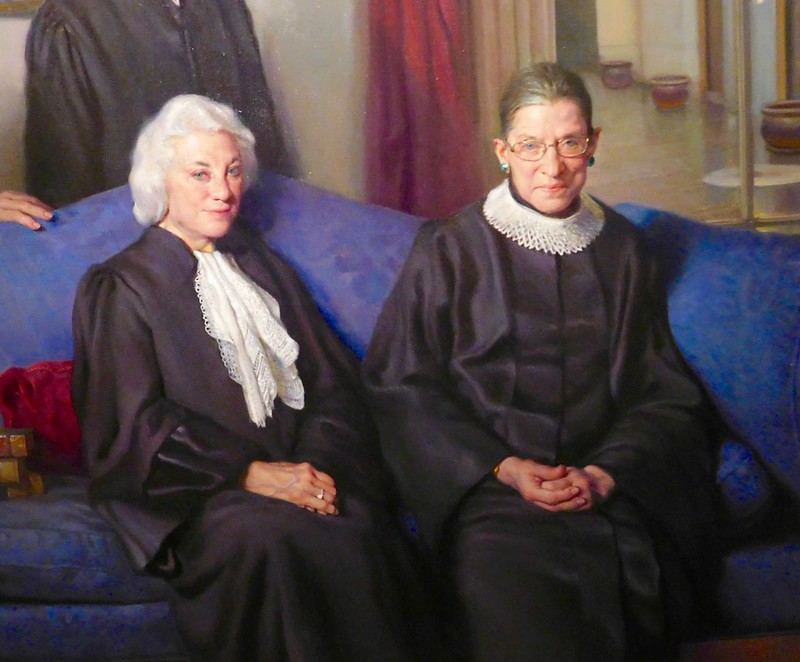
Baker: In the VMI case, arch conservative Justice Scalia wrote a scathing dissent. Ginsburg’s famous friendship with Scalia has always perplexed me. When the VMI case showed up in the book as one of her most important decisions, I wondered, how did she feel about that dissent?
Tyler: She talked about that dissent in her remarks at his memorial service. She said he gave her an early draft before he circulated it to the court because he wanted her to have extra time to respond, and she was very grateful for that. She also says in the speech, it was “a zinger,” putting it mildly, but she said it allowed her to go back and make her opinion better.
It allowed her to go back and shore up her points, better explain why he was wrong, and the end result, she said, on that occasion and on other occasions, was a far better opinion than the first draft.
I think that’s a really important story because it’s a story of engagement. It’s a story of how listening to the other side may not change your mind, but it can help you refine your arguments and maybe be more successful, potentially, in convincing others to join your camp. I think it is a great story of how, if you engage with the other side, it can actually be to your benefit in terms of improving your own arguments.
I think what bound them together was that they had so much common ground. She once said, “We both loved our families. We both love opera. We both grew up in New York”—she in Brooklyn, he in Queens. They had so much in common, and I think that they bonded over that, and they learned to appreciate that that connection helped them then engage intellectually in a very intense way, without question, but a way that she quite enjoyed. Intellectual sparring, if you will.
Both of them had very thick skins. In her confirmation proceedings, she quoted Judge Learned Hand, where he said the spirit of liberty is not always sure that it is right, and there’s a humility to that. By the same token, she was very clear as to what she believed in, and she never backed down from an argument. She never stopped fighting for the principles that were at the heart of what she thought was the work we should be doing. She navigated this very carefully, and I think really set a great example along the way.
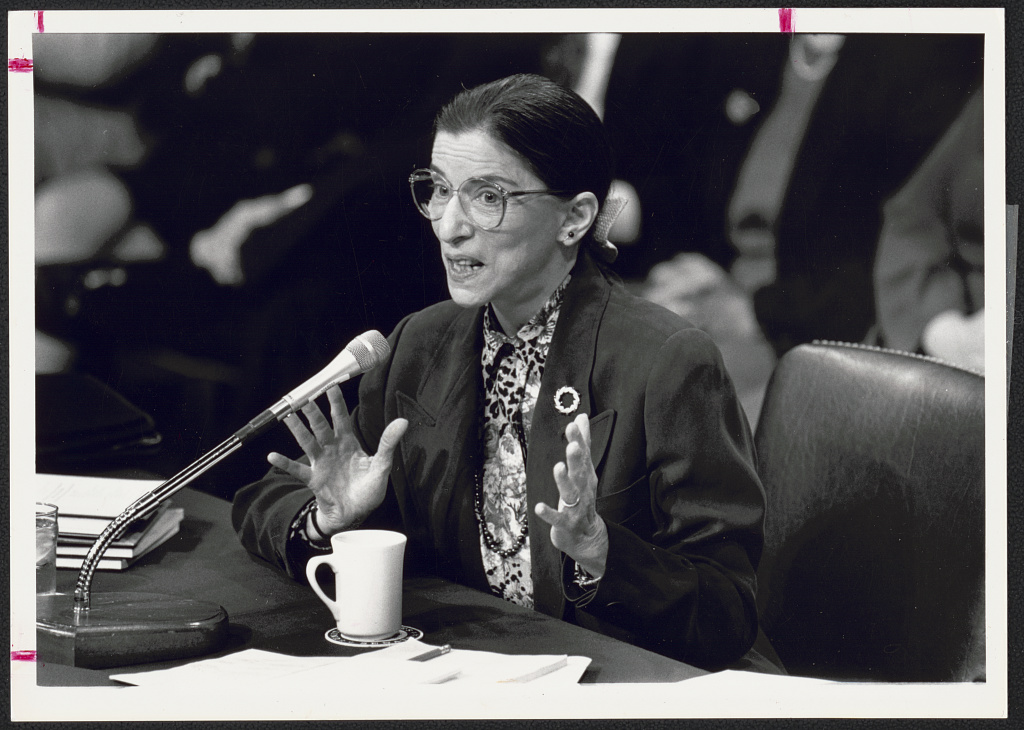
Baker: I was always interested in her strategy of filing cases on behalf of men. Why do you think she did that?
Tyler: She had, in the 1970s, an all-male Supreme Court, and lower courts that were overwhelmingly all male. It’s not until Jimmy Carter becomes president that we start to see women being put on the bench in any significant numbers. She knew her audience.
So, how do you convince an all-male audience that gender-based laws do not make women the darlings of the law? In fact, they hold women back—but they also hold men back, because, at the end of the day, the point is that we want everyone to be able to build the happy life that is the one of their choosing.
And so, in the Moritz case, you have a male plaintiff who wants the benefit of a tax credit for being a good person and taking care of his mother. But the tax code, irrationally, has singled out a category of never-married men from all other categories. A divorced man could get it, but not a never-married man. A never-married woman can get it, but not a never-married man.
What’s interesting about the brief is that she and Marty lay out the roadmap of where they’re going. That gender-based discrimination should receive heightened scrutiny. It’s like race, and unless there is a very good reason for it in the application of strict scrutiny, which is what they wanted, the highest level of scrutiny, then no such distinction should stand in the law.
By the time she gets before the court in Wiesenfeld, she knows the Court is engaging in this question of scrutiny, and it’s a very precarious moment in the jurisprudence. I think that’s also one of the reasons why she did come back in that case, and in other cases, to talk about how gender discrimination affects men, because she knows her audience, and she’s trying to make them see that this doesn’t make sense.
In the Wiesenfeld case, a man’s wife has died in childbirth. He wants to be a good father. He wants to do what any good human being should want to do, be there for his son, who’s now going to grow up without a mother.
That case in particular also struck a chord with her because, as she often discussed, for her, the dream was for men to want to be equal parents, and she knew from her own life that she was able to stand at the podium in the Supreme Court because she had a partner who had been an equal partner in parenting. I think it’s all these different aspects of her life and also her long-term thinking that led her to often, but not always, use male plaintiffs.
“For her, the dream was for men to want to be equal parents, and she knew from her own life that she was able to stand at the podium in the Supreme Court because she had a partner who had been an equal partner in parenting.”
Baker: Of the four opinions in the section, three of them are dissents. Justice Ginsburg was famous for her dissents. How did she feel about so often being in the minority on the court?
Tyler: I don’t think she liked losing at all. I think she was very frustrated with the direction of the Court on many issues, including those covered in the book. I think she took great care in writing her dissents because she knew that she was writing for the future. She was hopeful that they would remain relevant, that they wouldn’t be discarded and ignored over time.
She took care with everything she wrote, but I think she wasn’t just writing in the moment. She was writing for the future, and she was always an optimist. Having lived through what she lived through, having accomplished what she had accomplished, specifically in the context of gender discrimination, she knew that if you play the long game, you can win eventually.
Baker: What do you want readers to take away from this book?
Tyler: I want readers to be inspired. I hope that they will read about the extraordinary life that she lived and be inspired to contribute, be inspired to serve, be inspired to pick up the work that she made her life’s mission, namely to make ours a better society, a more just society, a more equal society. That was what she dedicated her life to doing, and I hope that someone reads this book and feels energized to keep doing that work and to keep her legacy alive.
You may also like:




